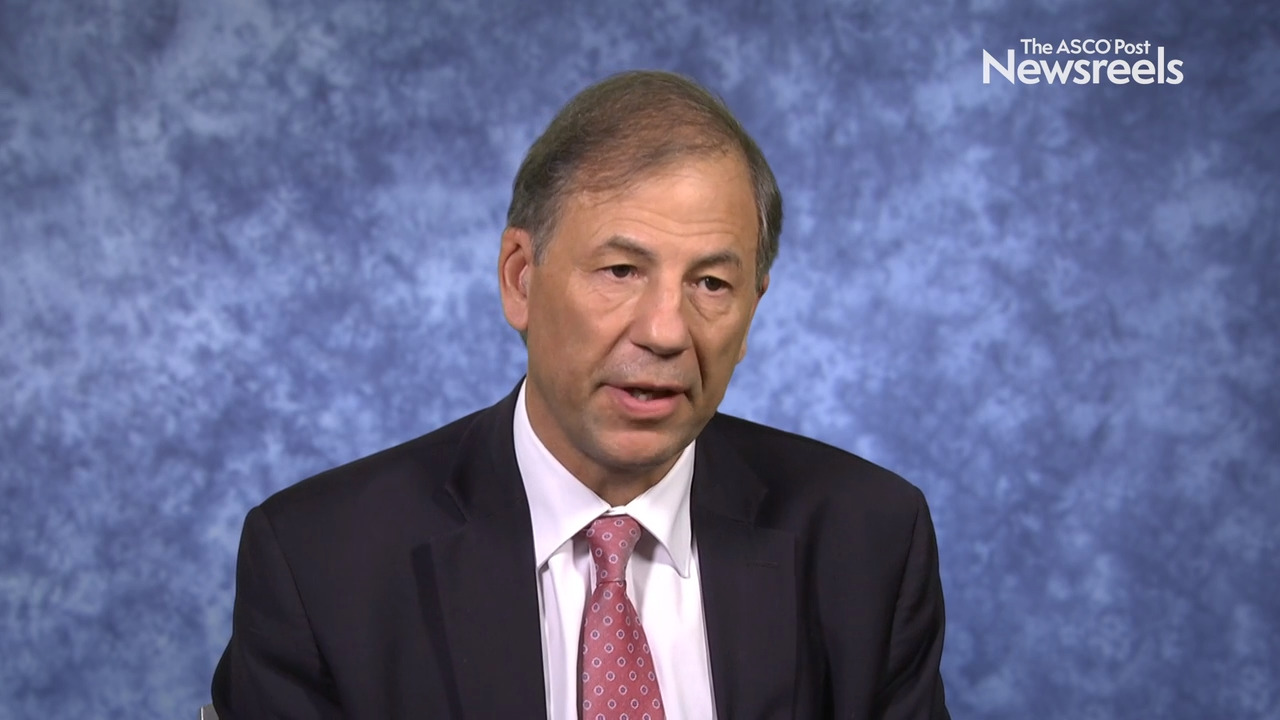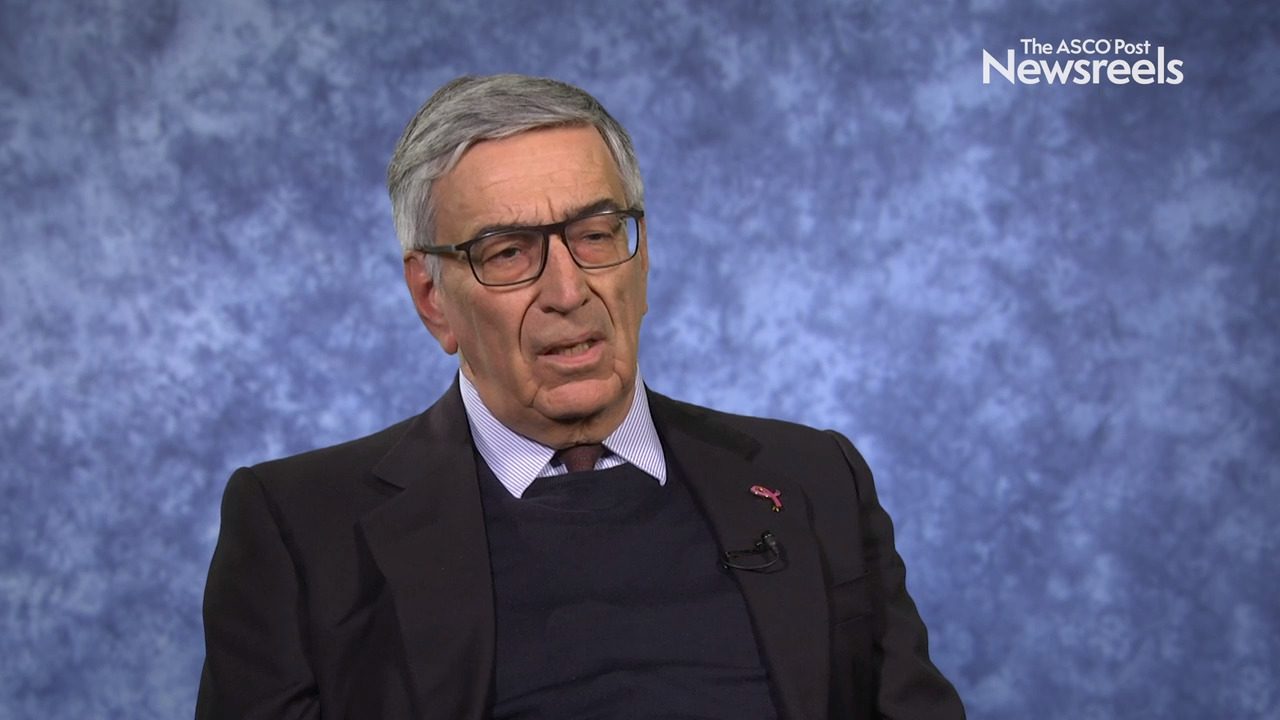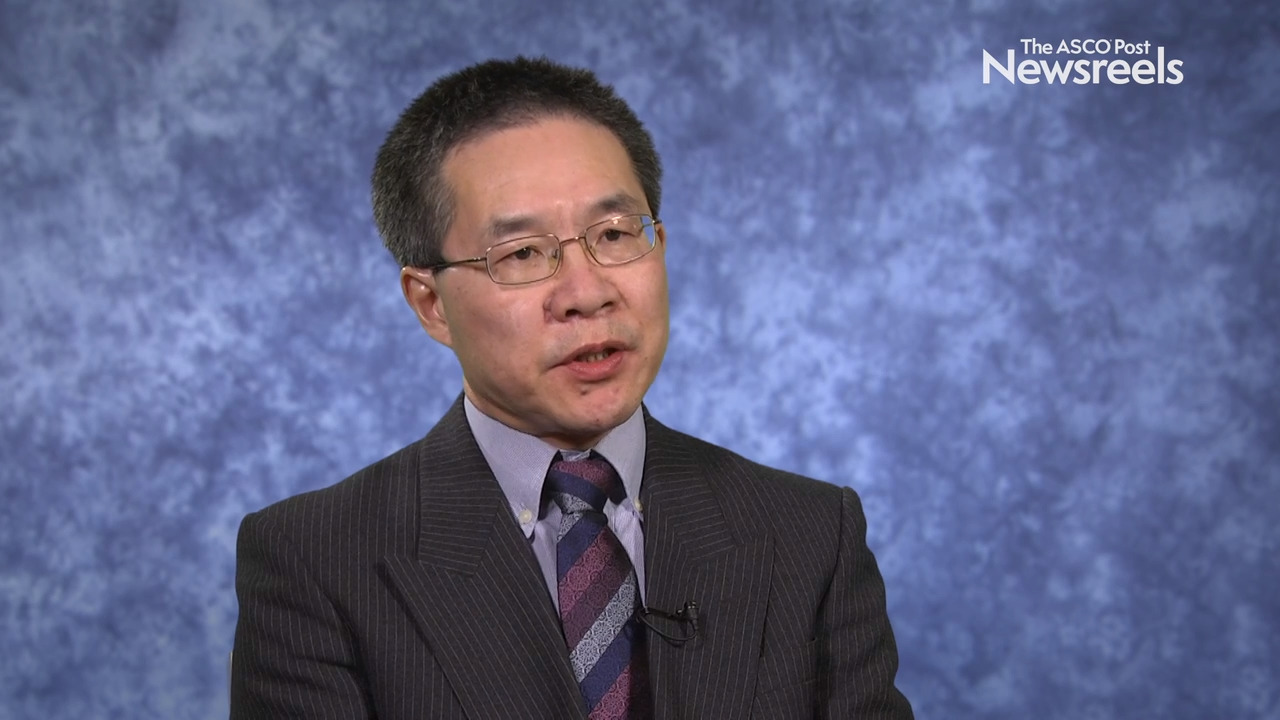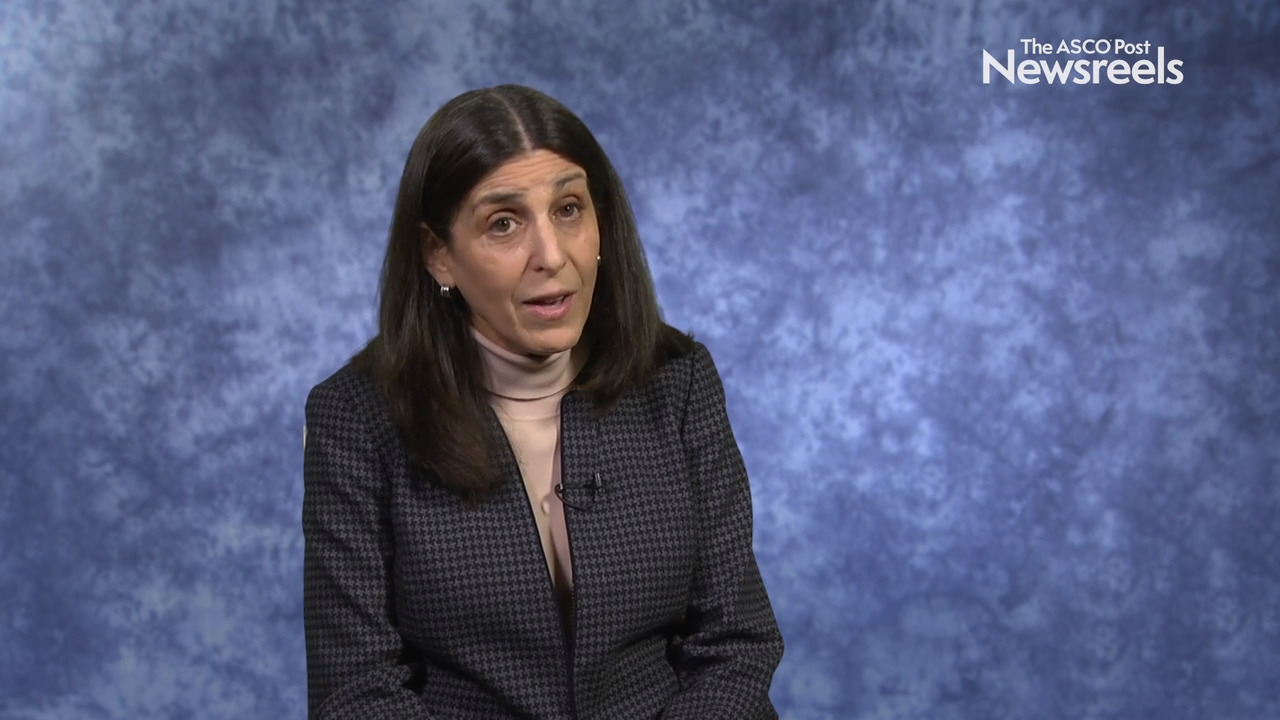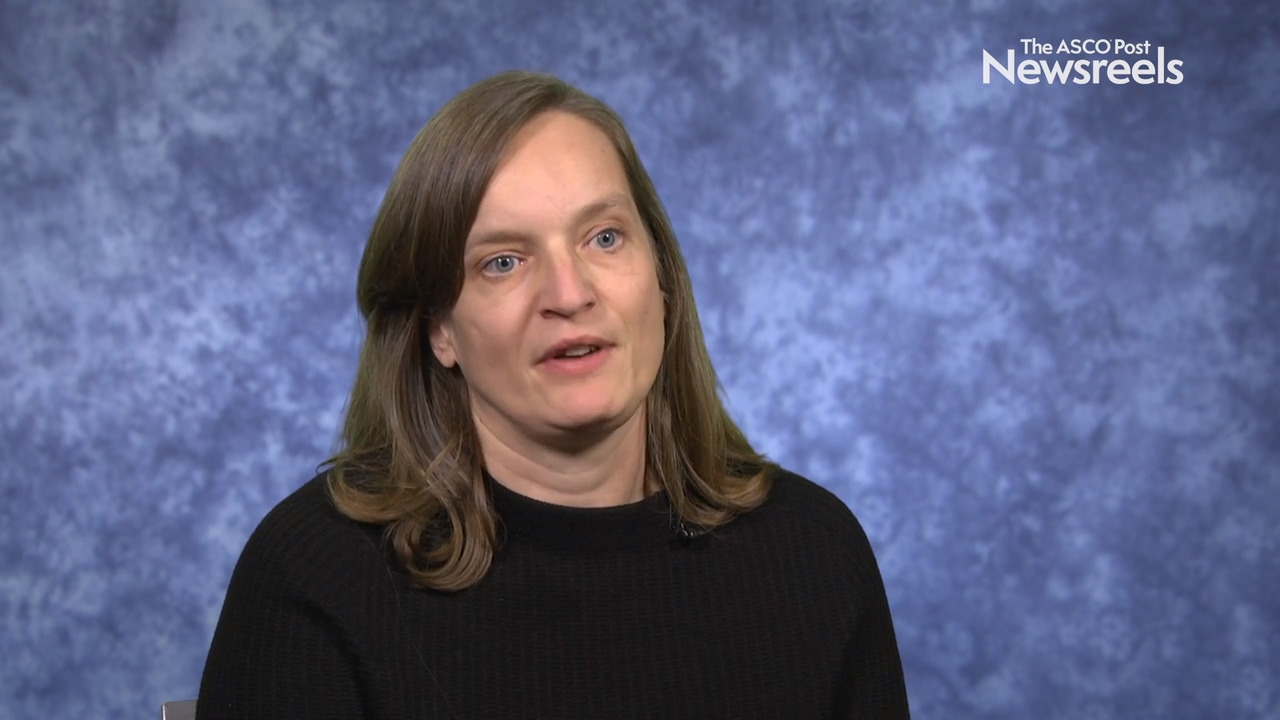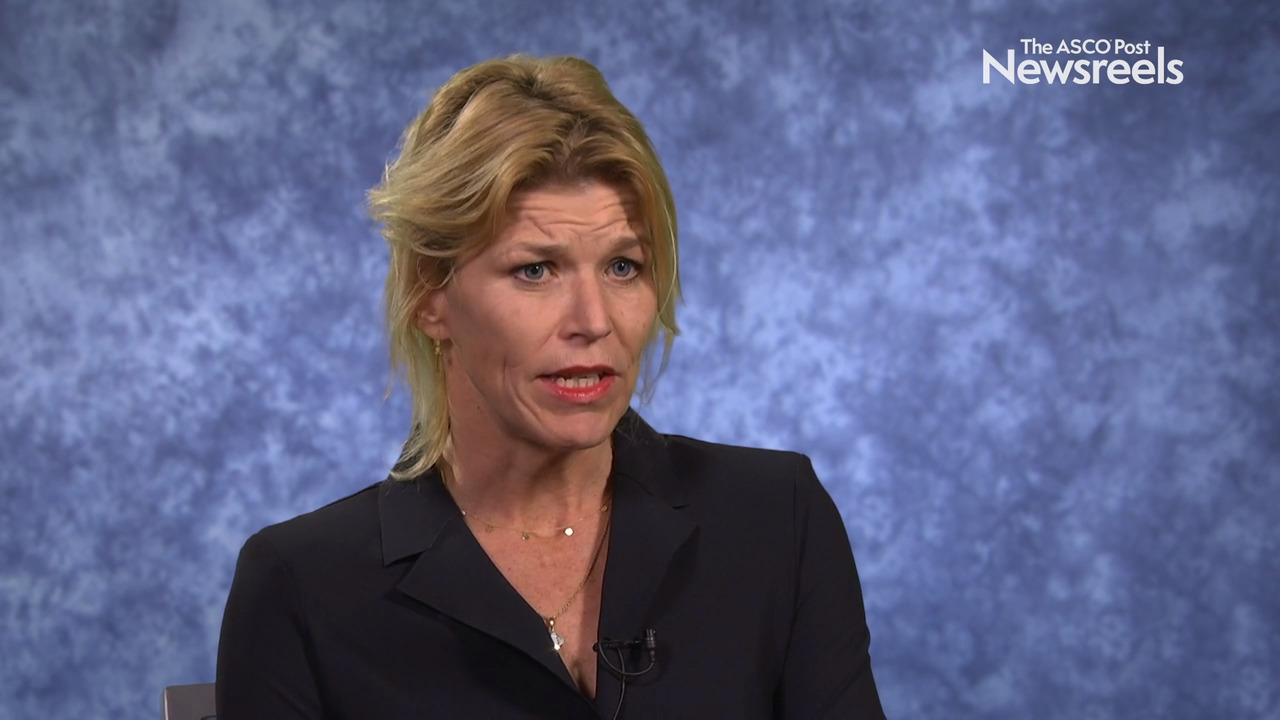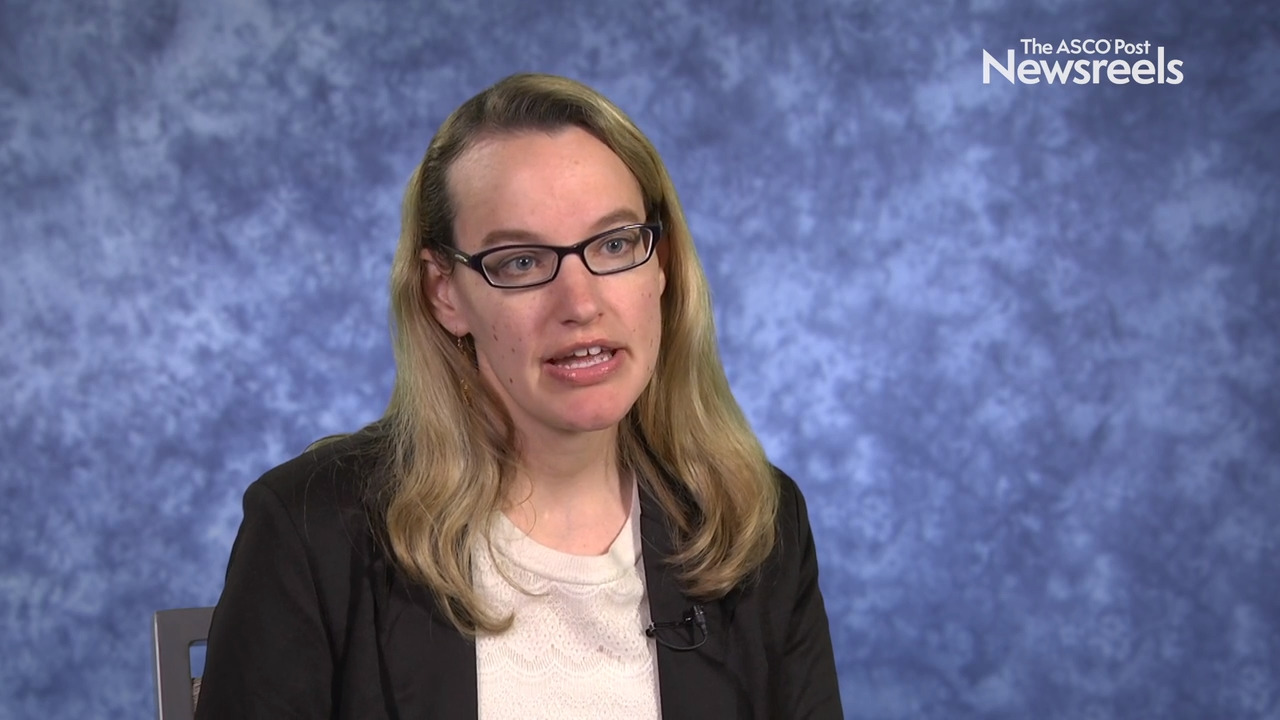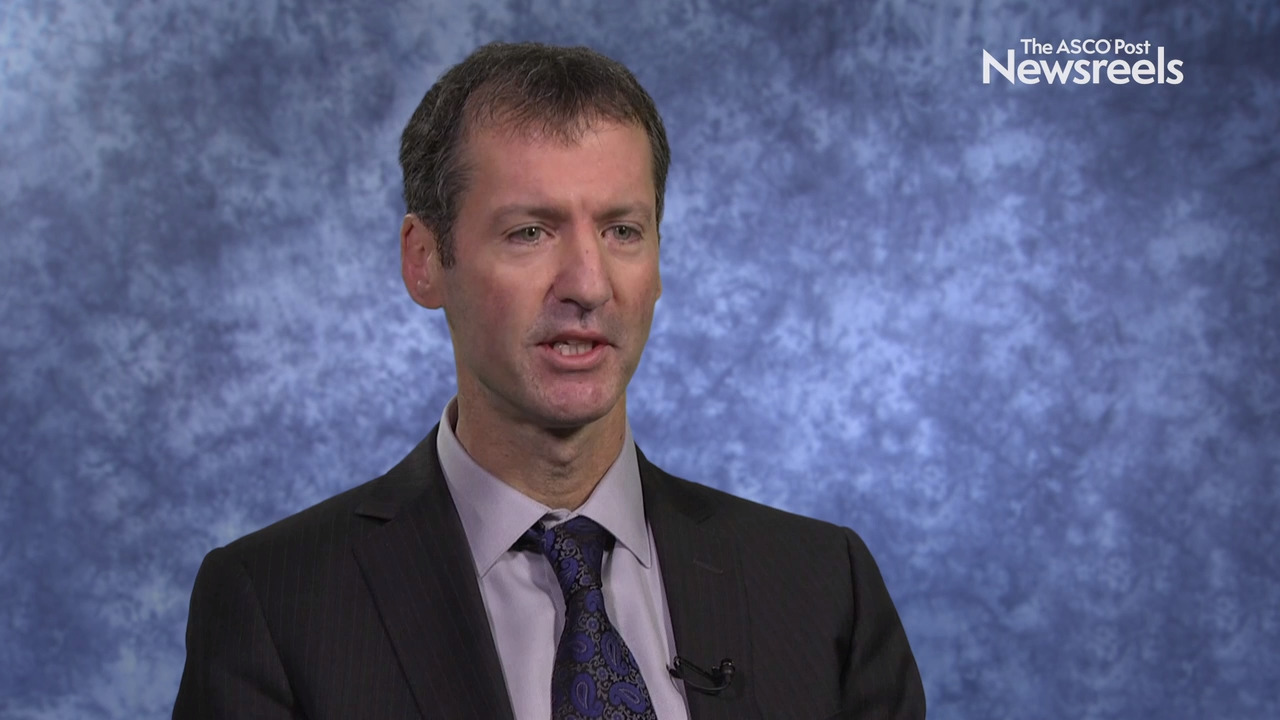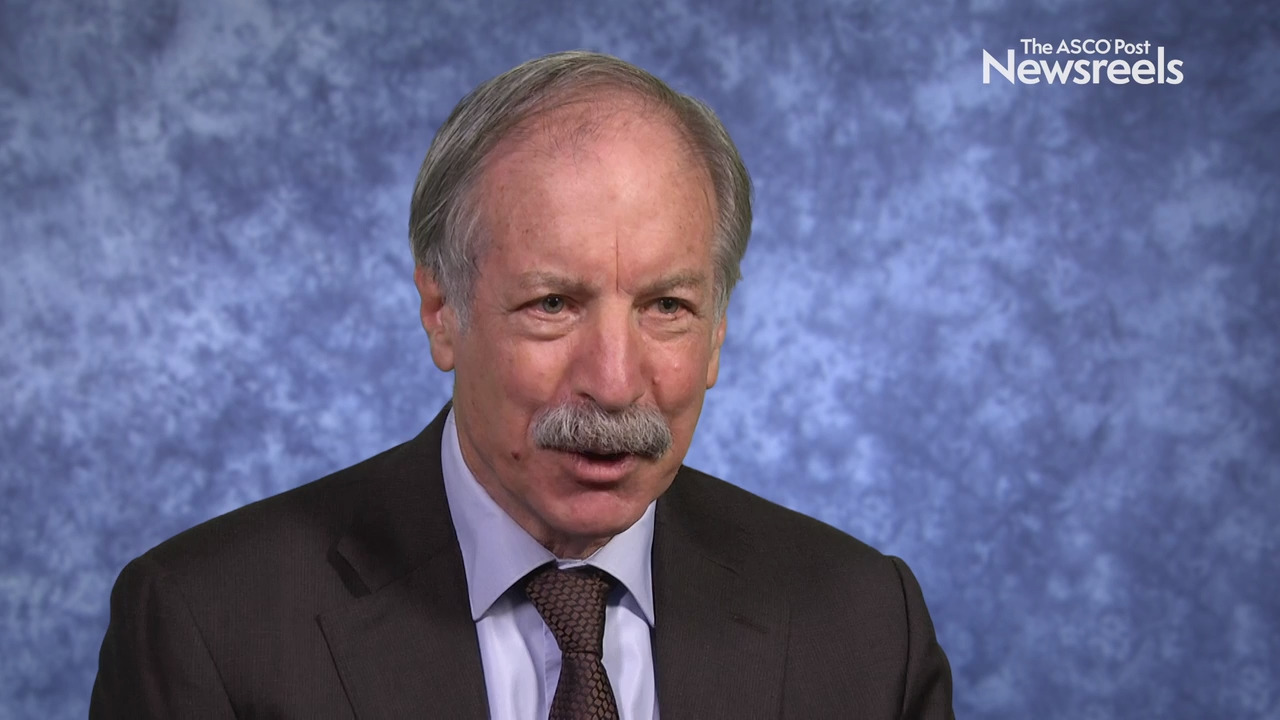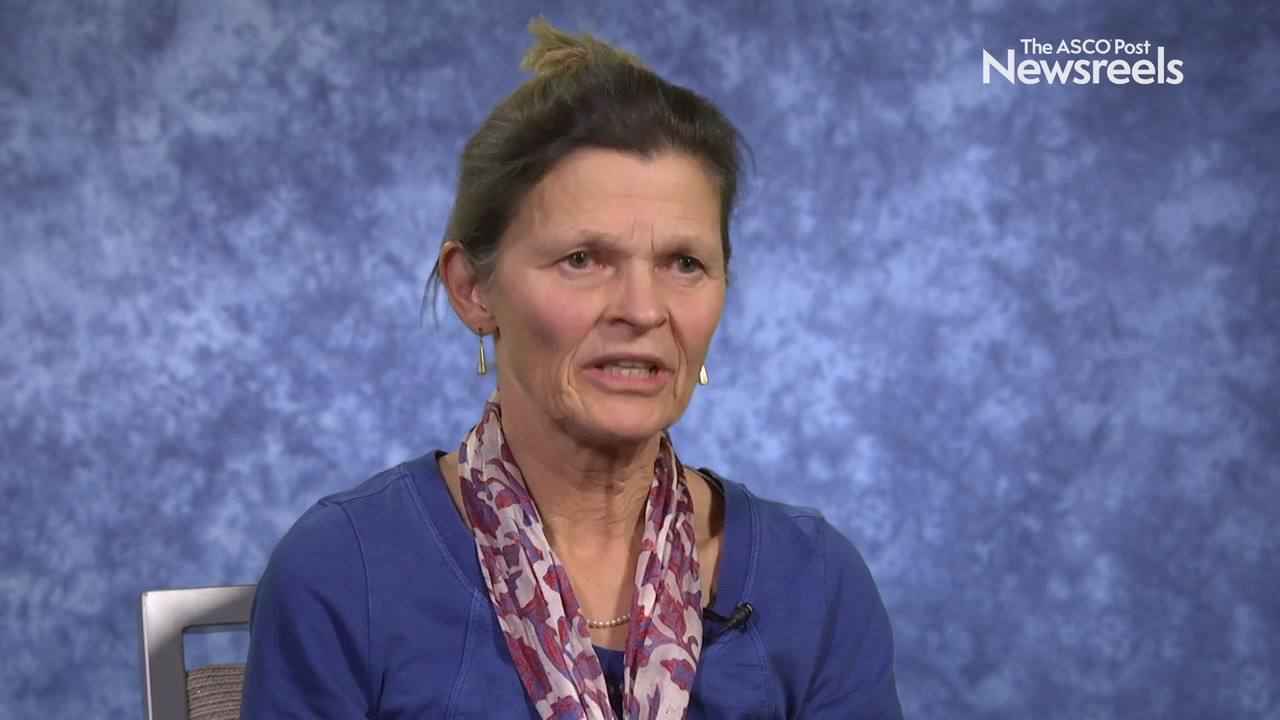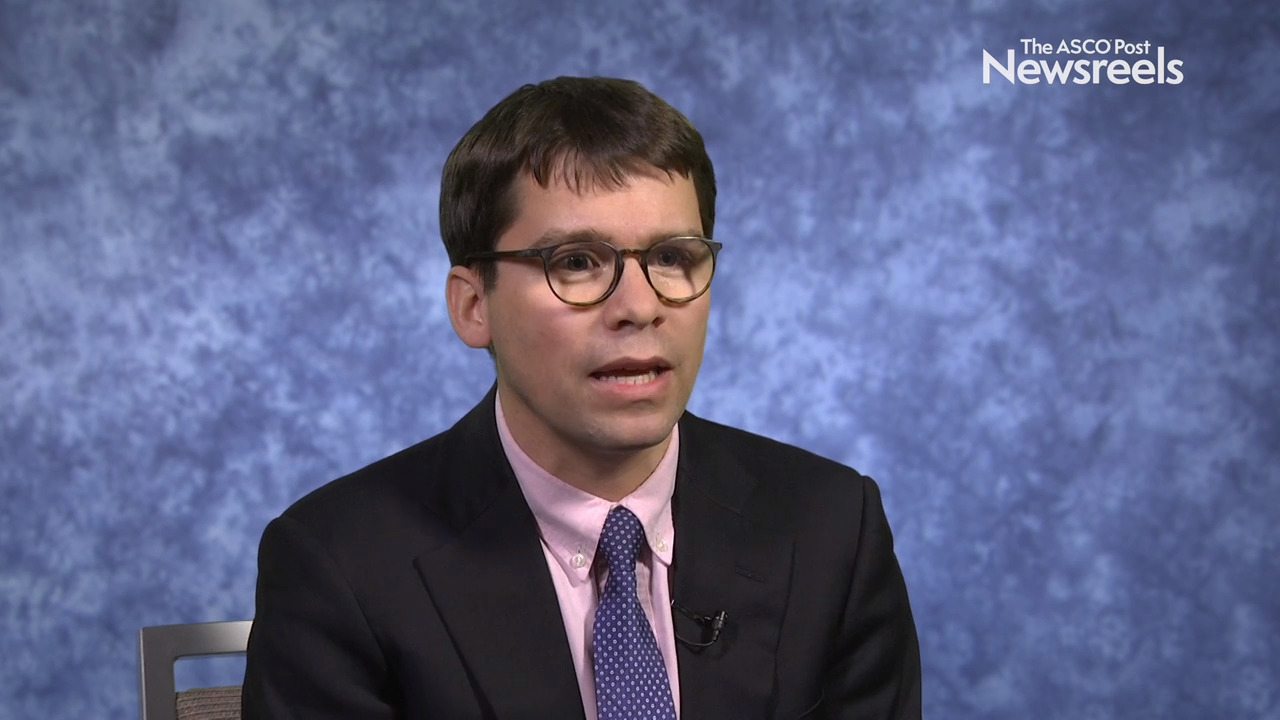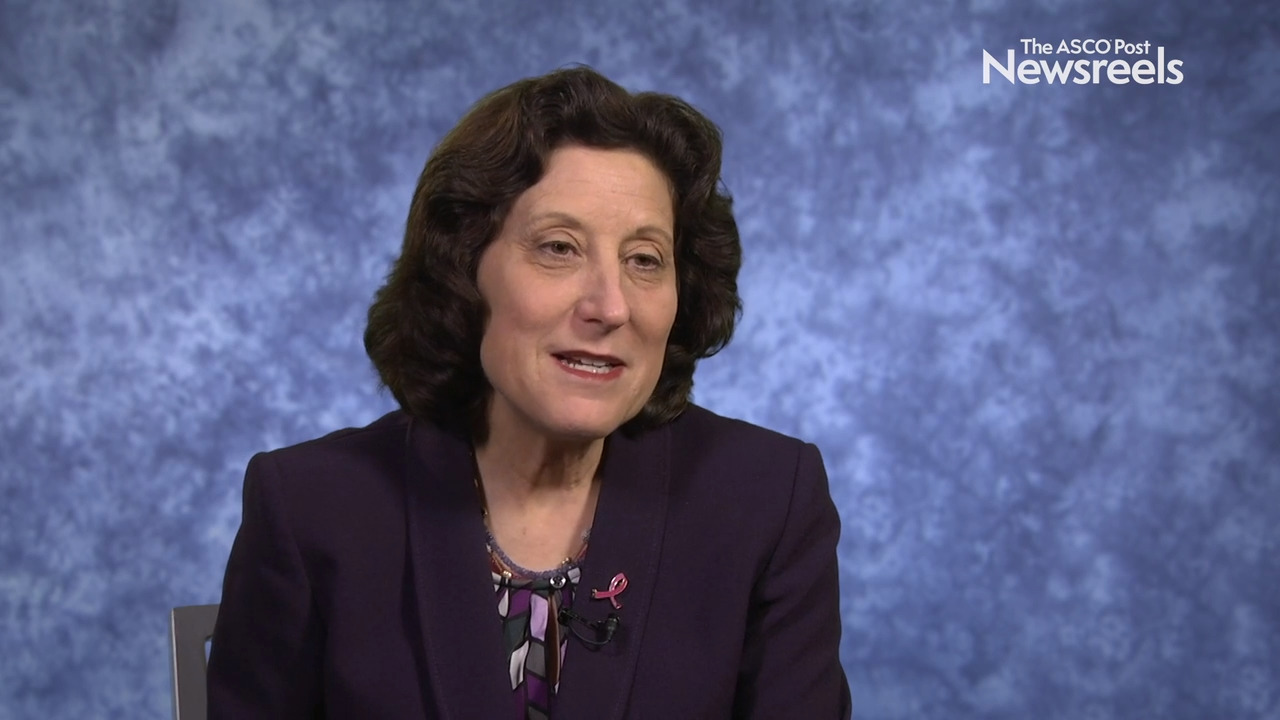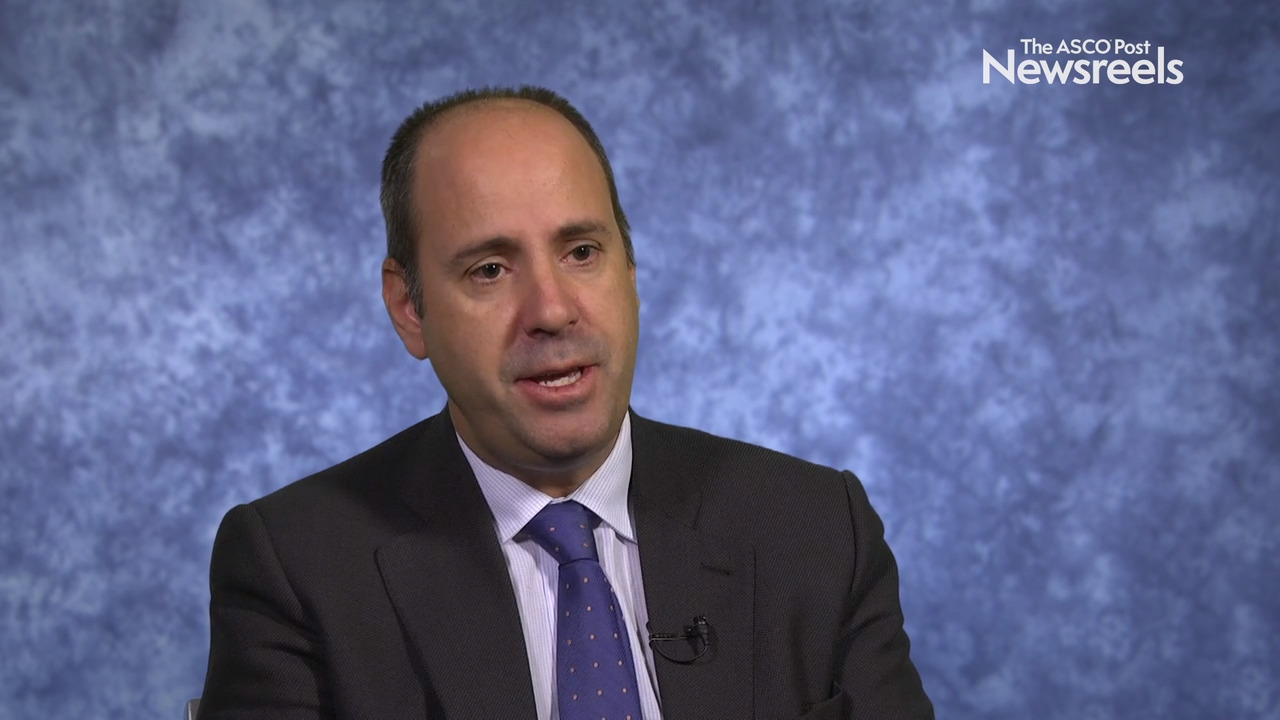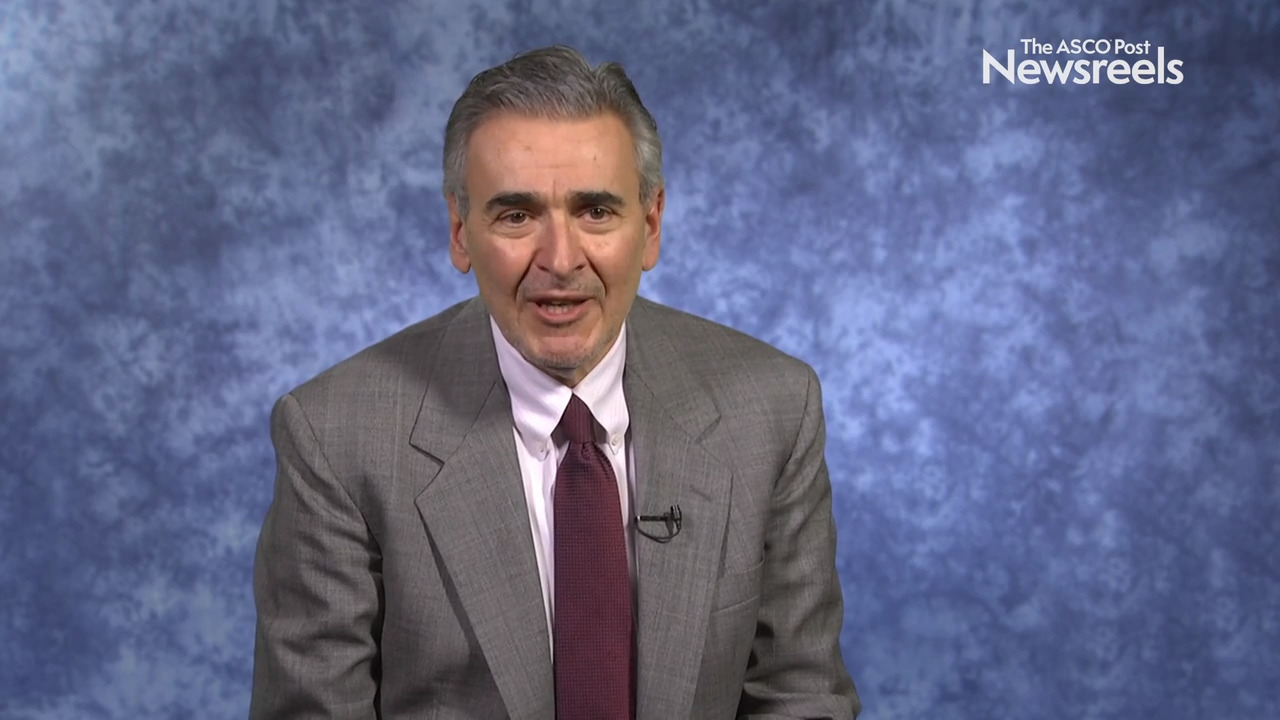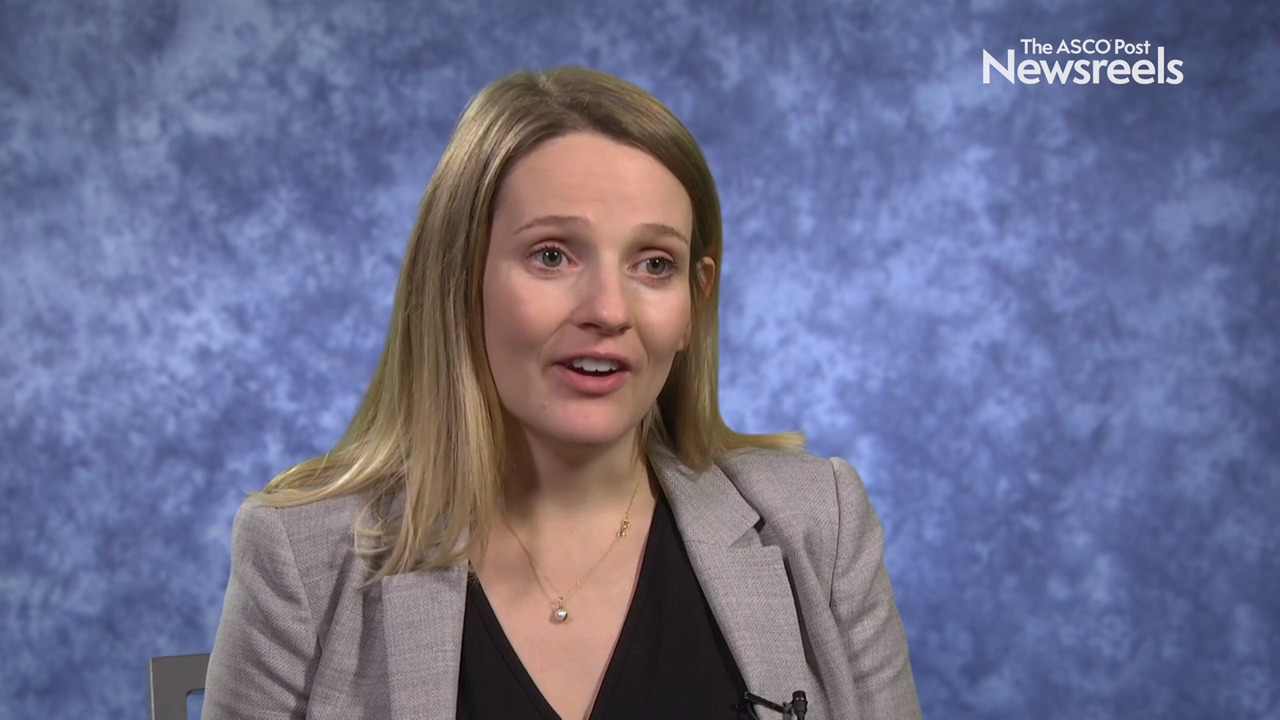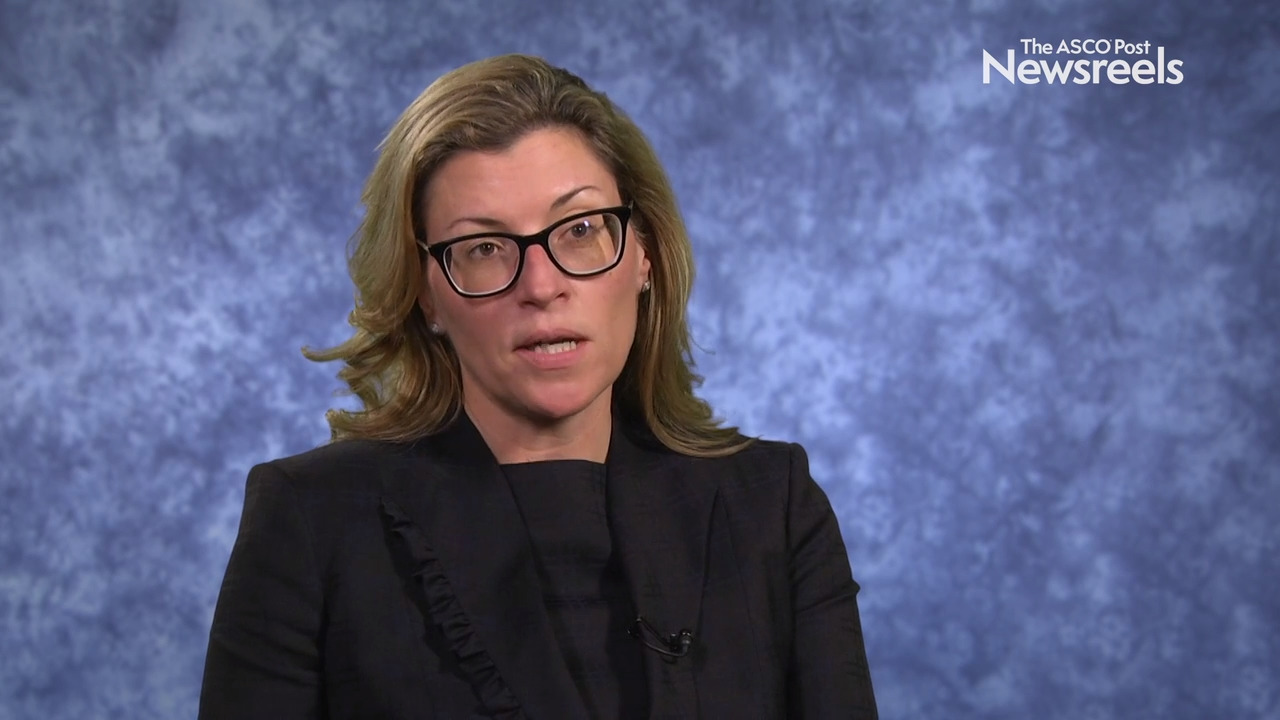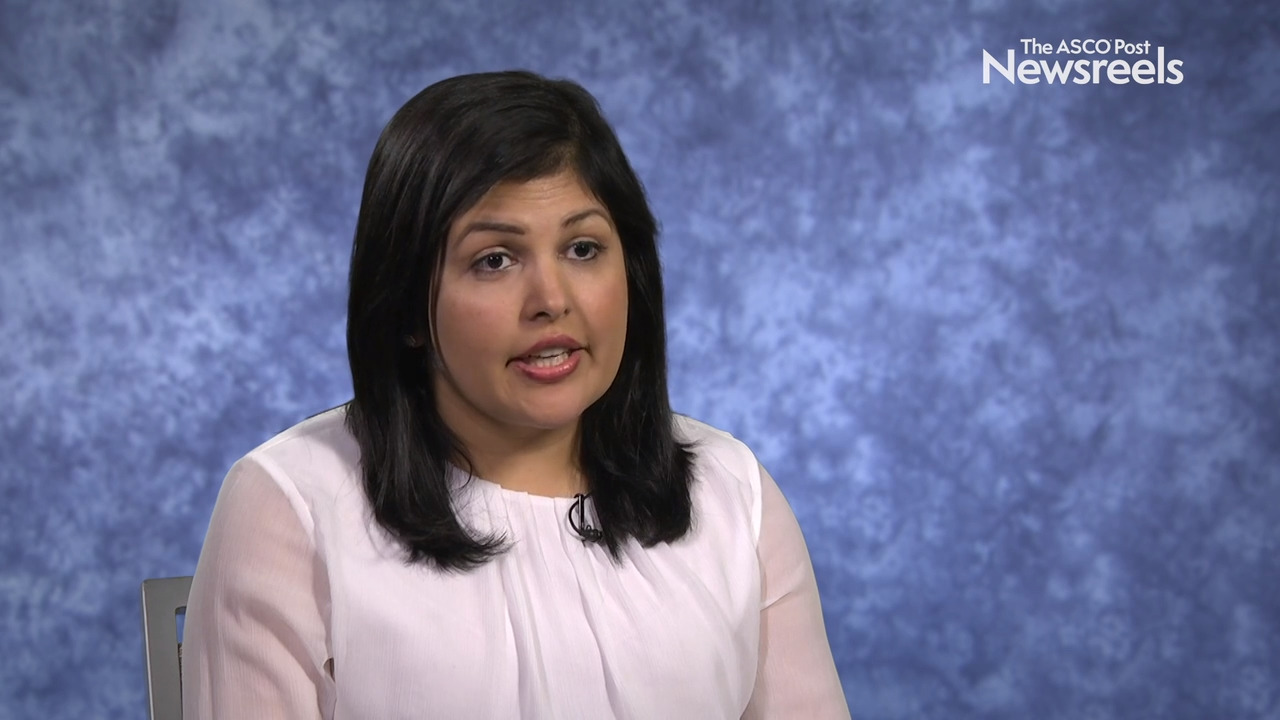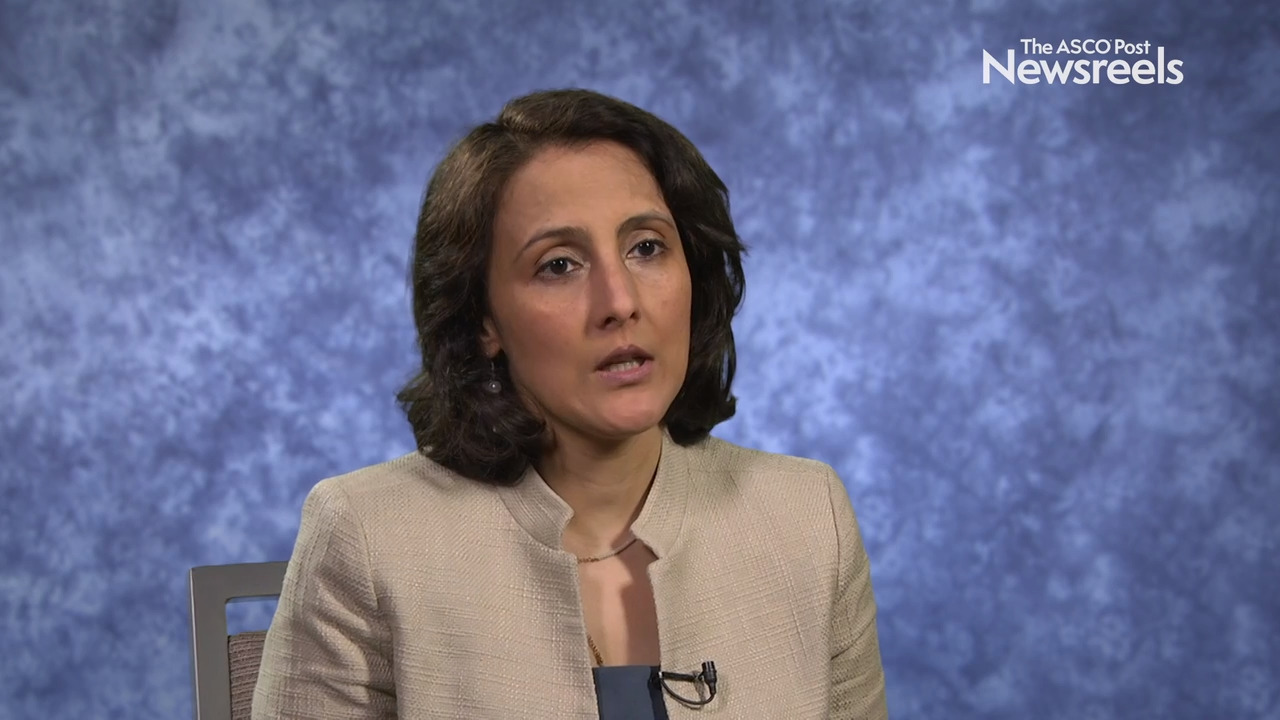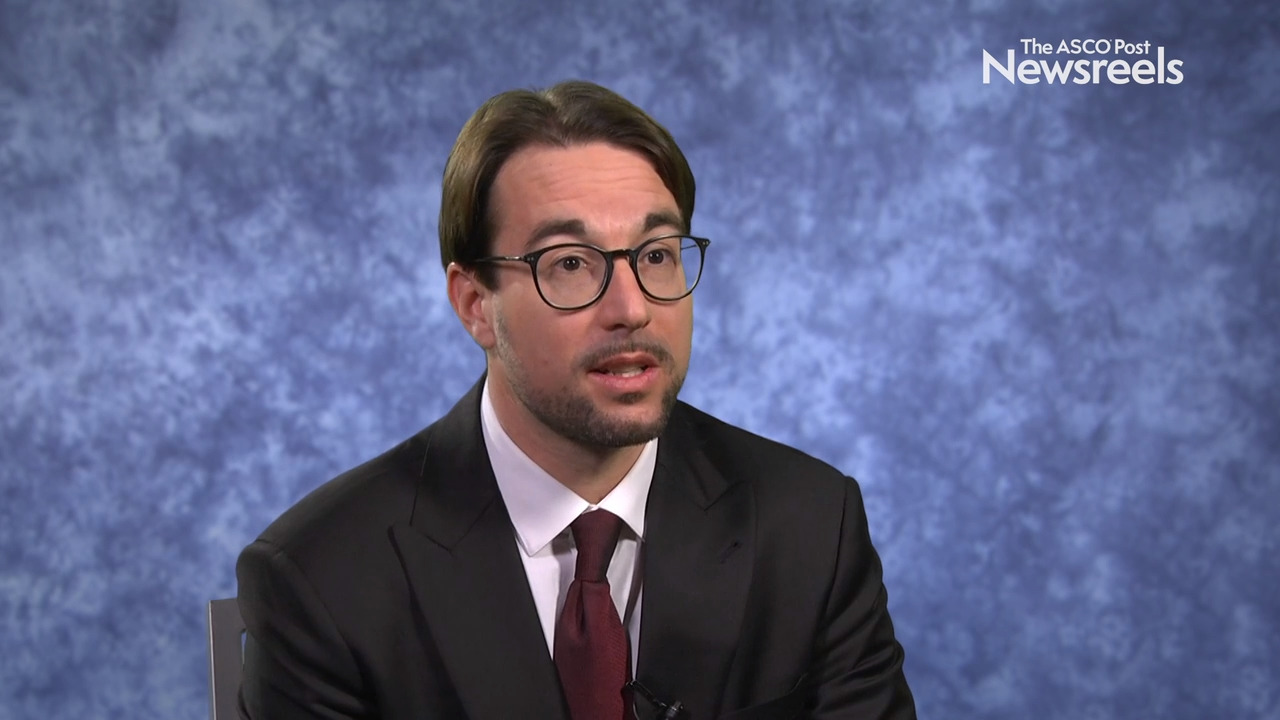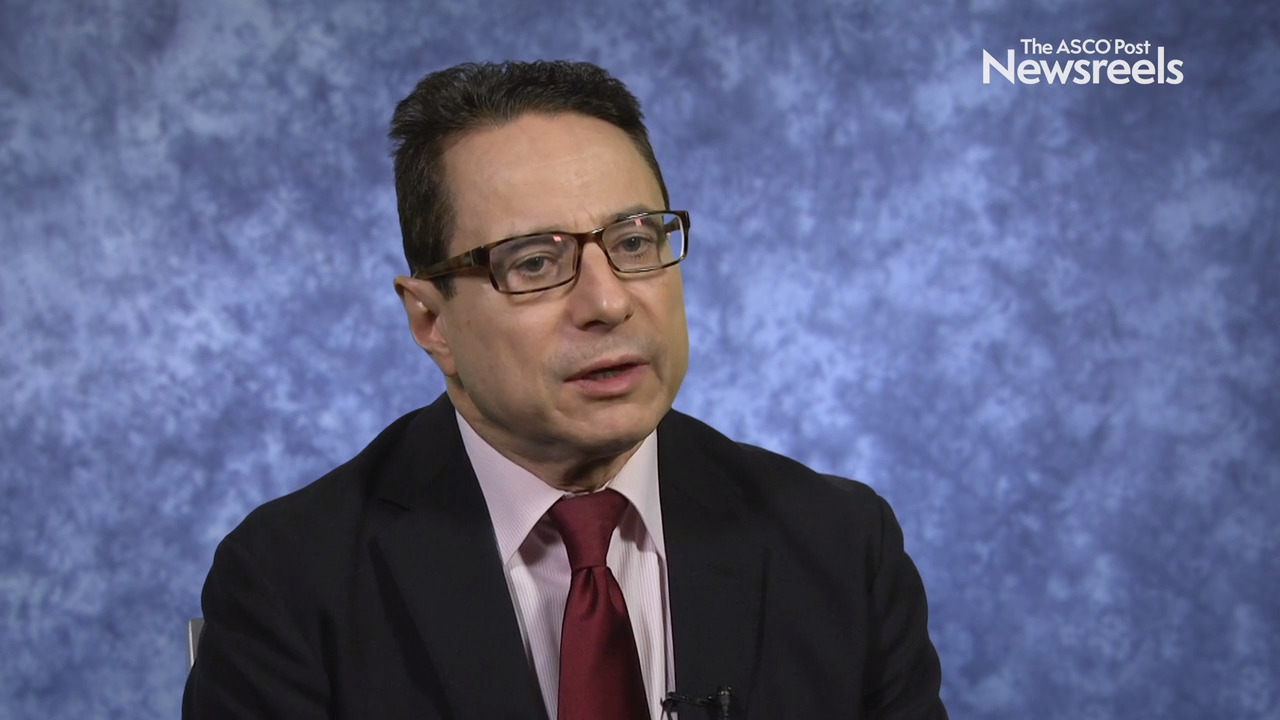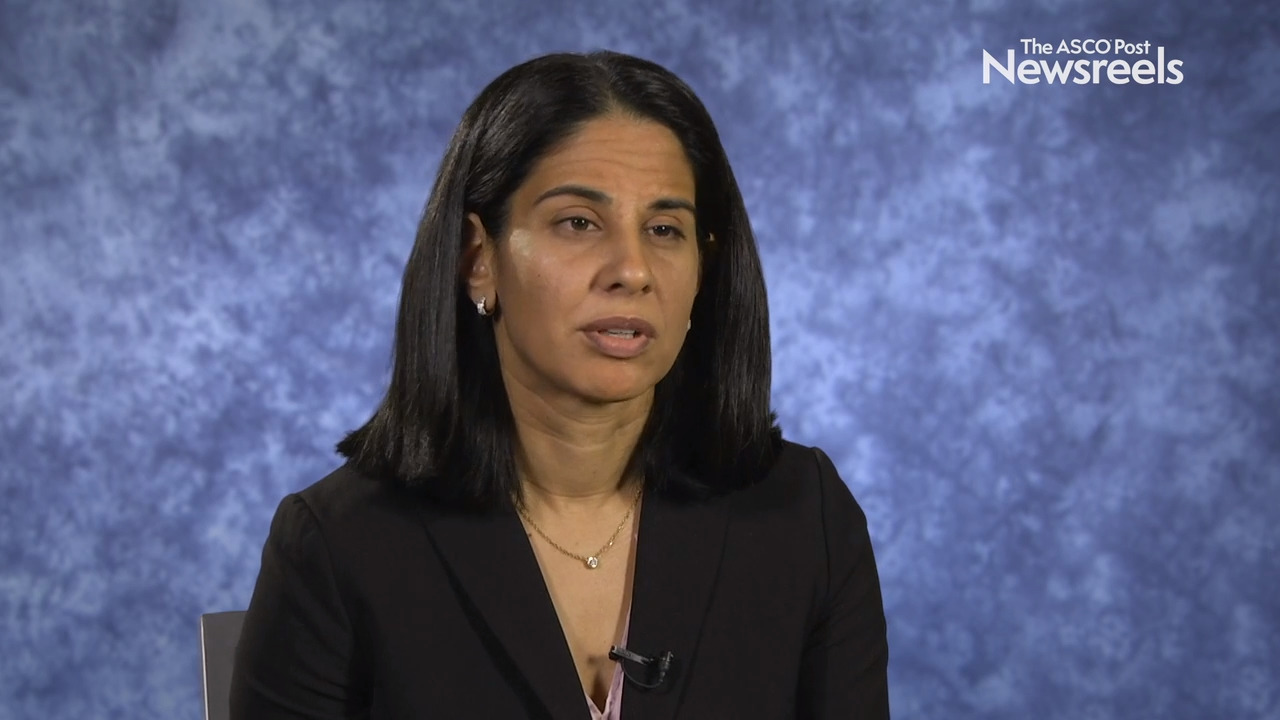Veliparib/Chemotherapy Combination Active in HER2-Negative BRCA-Positive Advanced Breast Cancer
The addition of the poly (ADP-ribose) polymerase (PARP) inhibitor veliparib to carboplatin/paclitaxel chemotherapy significantly improved progression-free survival in patients with advanced HER2-negative breast cancer and germline BRCA mutation compared with placebo plus chemotherapy, according to...
Recurrence Risk in Black and White Women With Borderline Estrogen Receptor–Positive Breast Cancer
In a study reported in the Journal of the National Cancer Institute, Benefield et al found that black women with borderline estrogen receptor (ER)-positive breast cancer had significantly poorer disease-free interval compared with those with ER-positive disease, irrespective of whether they...
First-Line Atezolizumab Plus Nab-paclitaxel in Advanced Triple-Negative Breast Cancer: Second Overall Survival Interim Analysis
As reported in The Lancet Oncology by Peter Schmid, MD, and colleagues, the prespecified second interim analysis of overall survival in the phase III IMpassion130 trial has shown no overall survival benefit with the addition of atezolizumab to nab-paclitaxel as first-line treatment of unresectable, ...
Study Links Sustained Weight Loss to Reduced Breast Cancer Risk
A new study finds that women who lost weight after age 50 and kept it off had a lower risk of breast cancer than women whose weight remained stable, helping answer a vexing question in cancer prevention.1 The reduction in risk increased with the amount of weight lost and was specific to women not...
Terry P. Mamounas, MD, MPH, on Extending Letrozole Treatment in Hormone Receptor–Positive Breast Cancer
Terry P. Mamounas, MD, MPH, of Orlando Health UF Health Cancer Center, discusses 10-year results from NRG Oncology/NSABP B-42, which showed that, for postmenopausal women with hormone receptor–positive breast cancer who have completed previous adjuvant therapy with an aromatase inhibitor or with tamoxifen followed by an aromatase inhibitor, extended treatment with letrozole improved disease-free survival (Abstract GS4-01).
Luca Gianni, MD, on the Neoadjuvant Treatment of Triple-Negative Breast Cancer
Luca Gianni, MD, of the Fondazione Michelangelo, discusses findings from the NeoTRIP trial on pathologic complete response to neoadjuvant treatment with or without atezolizumab in triple-negative, early high-risk, and locally advanced breast cancer (Abstract GS3-04).
Hongchao Pan, PhD, on an Update on 5 Years of Endocrine Therapy for Early Breast Cancer
Hongchao Pan, PhD, of the University of Oxford, discusses an analysis of 86,000 women in the Early Breast Cancer Trialists’ Collaborative Group database, which showed that the risk of distant recurrence 20 years after a diagnosis of node-negative, estrogen receptor–negative early-stage breast cancer in women who discontinued endocrine therapy at 5 years is likely to be about a third lower now than in his group’s previous report (Abstract GS2-04).
Nadine M. Tung, MD, on HER2-Negative Breast Cancer: INFORM Trial of Cisplatin vs Doxorubicin/Cyclophosphamide
Nadine M. Tung, MD, of Beth Israel Deaconess Medical Center, discusses cisplatin vs doxorubicin/cyclophosphamide (AC) as neoadjuvant treatment in BRCA-mutation carriers with HER2-negative breast cancer. Although cisplatin as a single agent shows activity in this setting, the pathologic complete response with this agent alone is not higher than that with standard AC chemotherapy (Abstract GS6-03).
Ivana Sestak, PhD, on Clinical Treatment Score From TAILORx: Predicting Distant Breast Cancer Recurrence
Ivana Sestak, PhD, of Queen Mary University of London and the Centre for Cancer Prevention, discusses study findings that confirm the prognostic ability of the Clinical Treatment Score at 5 years (CTS5) for late distant recurrence, specifically for patients older than 50 years and/or for those deemed to have intermediate- or high-risk hormone receptor–positive, HER2-negative, node-negative breast cancer. The CTS5 is less prognostic in women younger than 50 who received 5 years of endocrine therapy alone (Abstract GS4-03).
Marie-Jeanne T.F.D. Vrancken Peeters, MD, PhD, on Omitting Breast Surgery: Results of the MICRA Trial
Marie-Jeanne T.F.D. Vrancken Peeters, MD, PhD, of the Netherlands Cancer Institute, discusses an interim study analysis showing that ultrasound-guided core biopsies of the breast in patients with excellent response on MRI after neoadjuvant systemic therapy may not be accurate enough to safely select patients with pathologic complete response for omission of surgery (Abstract GS5-06).
Ariella B. Hanker, PhD, on Therapeutic Implications of HER2 and HER3 Mutations in Breast Cancer
Ariella B. Hanker, PhD, of UT Southwestern Medical Center, discusses data showing that breast cancers expressing co-occurring HER2 and HER3 mutations may require the addition of a phosphoinositide 3-kinase alpha inhibitor to a HER2 tyrosine kinase inhibitor (Abstract GS6-04).
Rowan T. Chlebowski, MD, PhD, on Breast Cancer: Findings From The Women’s Health Initiative
Rowan T. Chlebowski, MD, PhD, of the Lundquist Institute at Harbor-UCLA Medical Center, discusses the long-term influence of using estrogen plus progestin or estrogen alone on breast cancer incidence and mortality (Abstract GS5-00).
Gerardo Antonio Umanzor Funez, MD, on Metastatic Breast Cancer: Comparing IV and Oral Formulations of Paclitaxel
Gerardo Antonio Umanzor Funez, MD, of Liga Contra El Cáncer, discusses phase III findings on intravenous (IV) paclitaxel and oral paclitaxel plus encequidar (a novel P-gp inhibitor), the first orally administered taxane regimen shown to be superior to the IV formulation in terms of response and survival with less neuropathy (Abstract GS6-01).
Ian E. Krop, MD, PhD, on Trastuzumab Deruxtecan for Patients With Previously Treated, HER2-Positive Metastatic Breast Cancer
Ian E. Krop, MD, PhD, of Dana-Farber Cancer Institute, discusses phase II trial findings on trastuzumab deruxtecan, a HER2-targeting antibody-drug conjugate, in patients with HER2-positive metastatic breast cancer who were previously treated with trastuzumab emtansine (Abstract GS1-03).
Jack Cuzick, PhD, on the International Breast Cancer Intervention Study II: 10-Year Results
Jack Cuzick, PhD, of Queen Mary University of London, discusses the substantially greater benefits of anastrozole as compared with tamoxifen in terms of preventing breast cancer, with no increase in fractures or other reported serious side effects (Abstract GS4-04).
Madeleine M.A. Tilanus-Linthorst, MD, PhD, on MRI vs Mammography: Comparing Cost and Effectiveness
Madeleine M.A. Tilanus-Linthorst, MD, PhD, of Erasmus University, reports data from the first randomized trial comparing MRI breast cancer screening with mammography in women with a familial risk. Because MRI screening detected cancer at an earlier stage, it might reduce the use of adjuvant chemotherapy and decrease breast cancer–related mortality (Abstract GS4-07).
Joerg Heil, MD, PhD, on Image-Guided Vacuum-Assisted Breast Biopsy
Joerg Heil, MD, PhD, of the University Hospital Heidelberg, discusses findings on how accurately this technique can diagnose residual disease and pathologic complete response after neoadjuvant chemotherapy in patients with breast cancer. These data may help tailor, de-escalate, and potentially avoid unnecessary surgeries (Abstract GS5-03).
Hope S. Rugo, MD, on HER2-Positive Metastatic Breast Cancer: SOPHIA Trial of Chemotherapy Plus Margetuximab or Trastuzumab
Hope S. Rugo, MD, of the University of California San Francisco Comprehensive Cancer Center, discusses trial data on margetuximab plus chemotherapy, which improved progression-free survival in patients with previously treated HER2-positive metastatic breast cancer when compared with trastuzumab plus chemotherapy. Maturing data comparing overall survival also provides new insights (Abstract GS1-02).
Javier Cortes, MD, PhD, on Triple-Negative Breast Cancer: Results From the KEYNOTE-119 Trial of Pembrolizumab vs Chemotherapy
Javier Cortes, MD, PhD, of the IOB Institute of Oncology, discusses study findings that suggested pembrolizumab offered a prolonged survival benefit compared to chemotherapy for a subset of patients with previously treated metastatic triple-negative breast cancer. In the trial, high tumor-infiltrating lymphocytes were significantly associated with better clinical outcomes with the checkpoint inhibitor.
Joseph Sparano, MD: The William L. McGuire Memorial Lecture
Joseph Sparano, MD, of the Montefiore Medical Center, discusses three challenges: How can gene-expression profiles and other diagnostic tests be used to guide the use of adjuvant systemic therapy? Is it time to reappraise active surveillance? Are there diagnostic and therapeutic strategies that can identify tumors at highest risk of metastasis, and novel therapies that can block the spread of disease?
Milan Radovich, PhD, on ctDNA After Neoadjuvant Chemotherapy and Recurrence in Triple-Negative Breast Cancer
Milan Radovich, PhD, of Indiana University School of Medicine, discusses trial findings that show patients with triple-negative breast cancer who are at high risk of relapse after receiving preoperative chemotherapy can be risk-stratified based on the presence of minimal residual disease as determined by circulating tumor DNA and circulating tumor cells (Abstract GS5-02).
Belinda Kingston, MB ChB, on the Genomic Landscape of Breast Cancer Based on ctDNA Analysis
Belinda Kingston, MB ChB, of the Institute of Cancer Research London, discusses next-generation sequencing results from the plasmaMATCH trial, including the incidence of gene alterations overall, as well as the associations with clinical and pathologic features that may help direct treatment decisions (Abstract GS3-07).
Tari A. King, MD, on Molecular Differences Between Primary and Metastatic Breast Tumors
Tari A. King, MD, of Brigham and Women’s Hospital and Dana-Farber/ Brigham and Women’s Cancer Center, discusses retrospective findings from the AURORA U.S. Network on molecular differences between primary tumors and metastases, a better understanding of which may help lead to more effective treatment of metastatic breast cancer (Abstract GS3-08).
Rashmi K. Murthy, MD, on HER2-Positive Metastatic Breast Cancer: HER2CLIMB Trial of Tucatinib, Capecitabine, and Trastuzumab
Rashmi K. Murthy, MD, of The University of Texas MD Anderson Cancer Center, discusses data on the efficacy and safety of tucatinib, trastuzumab, and capecitabine, a treatment regimen under investigation for patients with advanced HER2-positive metastatic breast cancer refractory to standard-of-care regimens (Abstract GS1-01).
SABCS 2019: Oral vs Intravenous Paclitaxel for Patients With Metastatic Breast Cancer
Patients with metastatic breast cancer who received an oral formulation of paclitaxel had better response and survival and less neuropathy than patients who received intravenous paclitaxel, according to results of a phase III trial presented at by Umanzor et al at the San Antonio Breast Cancer...
SABCS 2019: Residual Cancer Burden After Neoadjuvant Chemotherapy as a Predictive Tool
A large meta-analysis of patients with breast cancer showed that residual cancer burden after neoadjuvant chemotherapy is an accurate long-term predictor of recurrence and survival across all breast cancer subtypes, according to data presented by Yau et al at the 2019 San Antonio Breast Cancer...
SABCS 2019: Breast Cancer Incidence With Estrogen/Progestin vs Estrogen Alone in Postmenopausal Women
A study investigating the long-term influence of estrogen plus progestin compared with estrogen alone on breast cancer incidence in postmenopausal women has found that the menopausal hormone therapies had opposite effects on breast cancer incidence. While estrogen alone decreased breast cancer...
SABCS 2019: ctDNA May Be an Independent Predictor of Disease Recurrence in Patients With Early-Stage Triple-Negative Breast Cancer
The detection of circulating tumor DNA (ctDNA) in patients with early-stage triple-negative breast cancer treated with surgery following neoadjuvant chemotherapy is an independent predictor of disease recurrence, according to a phase II study investigating the potential of using ctDNA to detect...
Nicholas C. Turner, MD, PhD, on ctDNA Testing to Direct Targeted Therapies in Advanced Breast Cancer
Nicholas C. Turner, MD, PhD, of The Royal Marsden NHS Foundation Trust, discusses findings from the plasmaMATCH trial, which showed that circulating tumor DNA testing offers accurate tumor genotyping to identify patients with rare HER2 and AKT1 mutations and may enable matching them with targeted treatments (Abstract GS3-06).
Priyanka Sharma, MD, on Postoperative Treatment of Primary Breast Cancer: POTENT Trial
Priyanka Sharma, MD, of the University of Kansas Medical Center, reviews new phase III data on adding oral fluoropyrimidine to adjuvant endocrine therapy, the current standard of care, in the setting of hormone receptor–positive, HER2-negative primary breast cancer (Abstract GS1-09).
Icro Meattini, MD, on Breast Irradiation After Breast-Conservation Surgery: 10-Year Follow-up Results
Icro Meattini, MD, of the University of Florence, discusses study findings that showed the less-invasive partial-breast irradiation using intensity-modulated radiotherapy after surgery may be an acceptable choice for patients with early breast cancer, as it is cost-effective, safe, and efficacious when compared with whole-breast irradiation (Abstract GS4-06).
Ralph R. Weichselbaum, MD, on Oligometastatic Cancer: The Role of Radioimmunotherapy
Ralph R. Weichselbaum, MD, of the University of Chicago, summarizes a plenary lecture in which he presented data that could guide future clinical strategies: studies supporting the basis and classification of oligometastatic disease, including breast cancer; and basic and clinical data on radioimmunotherapy (Abstract PL2).
Miguel Martín, MD, PhD, on Metastatic Breast Cancer: PEARL Trial on Palbociclib Plus Endocrine Therapy vs Capecitabine
Miguel Martín, MD, PhD, of the Gregorio Marañón Institute and GEICAM, discusses phase III study findings that showed no improvement in progression-free survival with palbociclib plus endocrine therapy vs capecitabine in patients with hormone receptor–positive/HER2-negative metastatic breast cancer whose disease progressed on aromatase inhibitors—although the drug combination was generally better tolerated than capecitabine (Abstract GS2-07).
Sara M. Tolaney, MD, MPH, on HER2-Positive Breast Cancer: ATEMPT Trial on T-DM1 vs Paclitaxel Plus Trastuzumab
Sara M. Tolaney, MD, MPH, of Dana-Farber Cancer Institute, discusses phase II findings on patients receiving T-DM1 monotherapy as adjuvant treatment for stage I HER2-positive breast cancer, a regimen associated with few recurrences in the study population (Abstract GS1-05).
SABCS 2019: Does Treatment With Pembrolizumab Improve Pathologic Complete Response in Patients With Triple-Negative Breast Cancer and Lymph Node Involvement?
The addition of the checkpoint inhibitor pembrolizumab to neoadjuvant chemotherapy and as adjuvant therapy increased the rates of pathologic complete response in patients with triple-negative breast cancer who had lymph node involvement, according to results from the KEYNOTE-522 trial, which were...
SABCS 2019: 6-Year Analysis of the Addition of Pertuzumab to Trastuzumab Plus Chemotherapy as Adjuvant Therapy
Data from the 6-year analysis of the APHINITY trial showed that adding pertuzumab to the previous standard treatment of trastuzumab plus chemotherapy after surgery continued to reduce the risk of recurrence and death in patients with HER2-positive early breast cancer, according to findings...
SABCS 2019: 10-Year Follow-up of Adjuvant Accelerated Partial-Breast Irradiation vs Adjuvant Whole-Breast Irradiation
A 10-year follow-up study of patients with breast cancer who had been treated with accelerated partial-breast irradiation (APBI) after surgery showed that their rates of disease recurrence were similar to those of patients who had received whole-breast irradiation (WBI), according to data presented ...
SABCS 2019: Ribociclib/Letrozole vs Multiagent Chemotherapy in Patients With High-Risk Luminal B Breast Cancer
A phase II study by Gavilá et al evaluating the efficacy of the combination of the CDK4/6 inhibitor ribociclib and the aromatase inhibitor letrozole in combination as a neoadjuvant treatment in patients with high-risk luminal B breast cancer has found that the therapy produced response rates...
SABCS 2019: IBIS-II Study Finds Long-Term Preventive Benefit With Anastrozole Among Postmenopausal Women at High Risk for Breast Cancer
A 10-year median follow-up analysis of the IBIS-II trial on the efficacy and safety of the aromatase inhibitor anastrozole for healthy postmenopausal women at increased risk of developing breast cancer has found that the therapy reduced the likelihood of breast cancer incidence by 50% and had few...
SABCS 2019: Postoperative S-1 Plus Endocrine Therapy for HR-Positive, HER2-Negative Breast Cancer
The postoperative combination of S-1, an oral fluoropyrimidine-based drug, with endocrine therapy improved invasive disease–free survival and 5-year invasive disease–free survival estimates in patients with hormone receptor (HR)-positive, HER2-negative breast cancer, according to results from the...
SABCS 2019: Adding Tucatinib to Capecitabine/Trastuzumab Improved Survival for Patients With Advanced HER2-Positive Breast Cancer
The addition of tucatinib to capecitabine and trastuzumab significantly improved progression-free survival and overall survival in patients with advanced HER2-positive breast cancer, with or without brain metastasis. These findings—from the HER2CLIMB study—were presented by Murthy et al at the 2019 ...
SABCS 2019: [Fam-] Trastuzumab Deruxtecan in Patients With Pretreated HER2-Positive Metastatic Breast Cancer
A phase II clinical study investigating [fam-] trastuzumab deruxtecan (T-DXd) in patients with metastatic HER2-positive breast cancer previously treated with trastuzumab emtansine (T-DM1) showed patients had an overall response rate of 60.9% with the treatment. The study by Krop et al was presented ...
Having Cancer Should Not Make You Homeless
In the spring of 2005, I was launching a new career as a sales consultant for a startup graphics company and wanted to cross off a few essential things on my to-do list, including getting my annual mammogram and physical, before I started my new job. Although I was surprised when I got a call from ...
Trastuzumab Biosimilar HLX02 Shows Activity in HER2-Positive Metastatic Breast Cancer
The trastuzumab biosimilar HLX02—manufactured in China—achieved a similar overall response rate to reference trastuzumab in women with HER2-positive recurrent or previously untreated metastatic breast cancer, according to a large, randomized phase III study. Binghe Xu, MD, PhD, of the Department of ...
2019 Advanced Breast Cancer Award Goes to Fatima Cardoso, MD
The European School of Oncology (ESO), together with the Advanced Breast Cancer Global Alliance, bestowed the 2019 Advanced Breast Cancer Award upon Professor Fatima Cardoso, MD, Director of the Breast Unit of the Champalimaud Clinical Centre in Lisbon, “in recognition of her foresight in...
Study Suggests Association Between Increased Risk of Breast Cancer and Use of Chemical Hair Products
Scientists at the National Institutes of Health (NIH) found that women who use permanent hair dye and chemical hair straighteners may have a higher risk of developing breast cancer than women who do not use these products. The study, published by Eberle et al in the International Journal of Cancer, ...
Promising New Treatments for Triple-Negative Breast Cancer: Immunotherapy and Other Targeted Therapies
Clinical trials continue to demonstrate that combining immunotherapy with chemotherapy and other targeted therapies can improve survival for patients with triple-negative breast cancer, according to results presented at the 21st Annual Lynn Sage Breast Cancer Symposium in Chicago. Nearly 700...
Breast-Conserving Surgery and Partial-Breast Reirradiation in Patients With Ipsilateral Disease Recurrence
Findings from the phase II NRG Oncology/RTOG 1014 trial, reported in JAMA Oncology by Arthur et al, showed that partial-breast reirradiation after second lumpectomy for recurrence of ipsilateral breast cancer following previous whole-breast irradiation was an effective treatment approach and could...
‘Unexpected’ Survival Benefit With Trilaciclib Plus Chemotherapy in Triple-Negative Breast Cancer
An unanticipated result of a randomized phase II study was the improvement in overall survival achieved with the investigational CDK4/6 inhibitor trilaciclib in women with metastatic triple-negative breast cancer. The drug was not being evaluated for its anticancer effects, but rather as a means of ...
FDA Approves FoundationOne CDx as a Companion Diagnostic for Alpelisib/Fulvestrant Treatment in Breast Cancer
On December 4, the U.S. Food and Drug Administration (FDA) approved FoundationOne CDx to be used as a companion diagnostic for alpelisib in combination with fulvestrant for the treatment of postmenopausal female patients as well as male patients with hormone receptor (HR)-positive, HER2-negative,...
